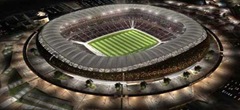 As surprising as this fact may be to some, especially those of us in the United States, soccer is actually the most popular sport on the planet. While some leagues begin their seasons in the spring, others begin in the fall and carry through the winter.
As surprising as this fact may be to some, especially those of us in the United States, soccer is actually the most popular sport on the planet. While some leagues begin their seasons in the spring, others begin in the fall and carry through the winter.Here’s our list of the 7 most impressive football (soccer) stadiums in the world.
7. Maracana, Rio De Janeiro, Brazil
The Estádio do Maracanã, officially Estádio Jornalista Mário Filho, is an open-air stadium in Rio de Janeiro, Brazil. Owned by the Rio de Janeiro State Government, it is named after the Maracanã neighbourhood in Rio de Janeiro. It was opened in 1950 to host the FIFA World Cup, and in the final game Brazil was beaten 2-1 by Uruguay. Since then, it has mainly been used for football matches between the major football clubs in Rio de Janeiro, including Botafogo, Flamengo, Fluminense and Vasco da Gama. It has also hosted a number of concerts and other sporting events. Although the paid attendance at the final game of the 1950 FIFA World Cup was 199,854, the stadium currently seats 82,238 spectators. It was the main venue of the 2007 Pan American Games, hosting the football final, and the opening and closing ceremonies.
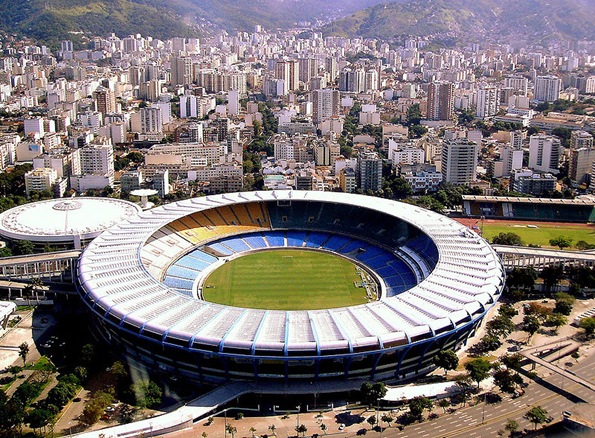 Photo by Arthur Boppré
Photo by Arthur BoppréOver time, however, the stadium also has become a multi-character space to receive other events such as shows and games from other sports, such as volleyball. After several works of modernization, the current capacity of the stadium is 82,238 spectators, making it the largest stadium in Brazil and South America.
The Maracanã is currently closed for renovations and upgrades, and will reach a total capacity of around 85,000 spectators in preparations for the 2014 World Cup, the 2016 Summer Olympics and the 2016 Summer Paralympics. The stadium reopening is forecasted for early 2013, in time for the 2013 FIFA Confederations Cup.
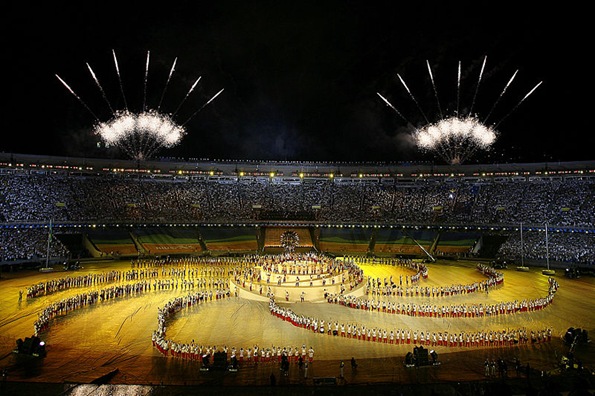
The stadium in the 2007 Pan American Games Opening Ceremony. Photo by Ricardo Stuckert/PR
6. Nou Camp, Barcelona, Spain
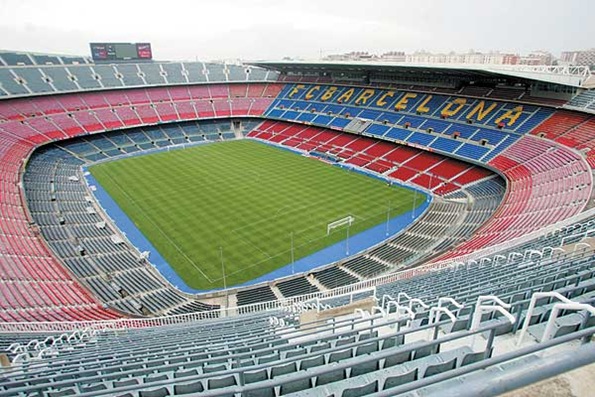
Though opposed by Sandro Rosell, FC Barcelona initially approved the sale of its former training ground Mini Estadi to remodel the stadium on its fiftieth anniversary. The plans are on hold because of the financial crisis of 2009.

Photo by DJ Lucifer
5. San Siro, Milan, Italy
The Stadio Giuseppe Meazza, originally and commonly referred to as the San Siro because of its location, is a football stadium located in the San Siro district in Milan, Italy and has the capacity to seat over 85,000 guests. It is the home of both A.C. Milan and F.C. Internazionale Milano. The stadium is named in honour of Giuseppe Meazza, the two-time World Cup winner (1934, 1938) who played for Internazionale, and briefly for Milan, in the 1930s and 1940s. It held UEFA five-star stadium status which was superseded by a new system of classification.
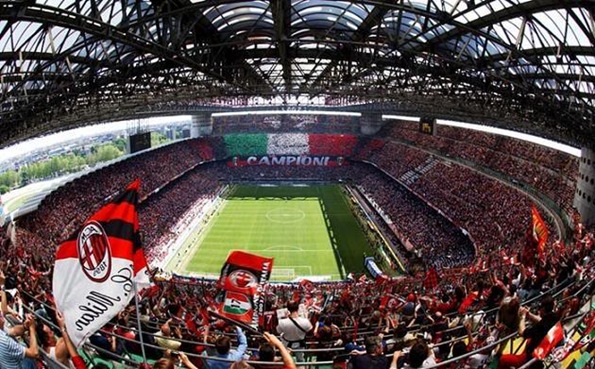
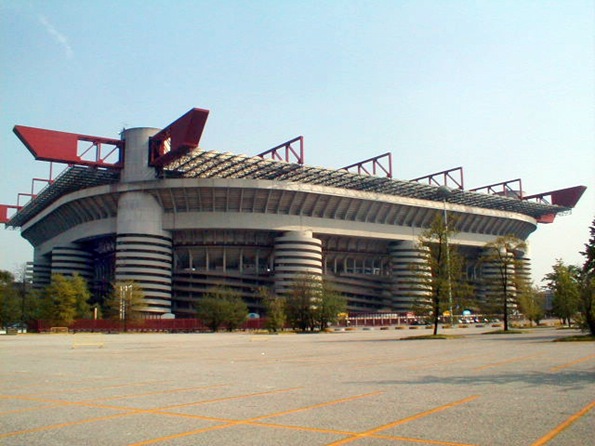
4. Donbass Arena, Donetsk, Ukraine
Donbass Arena is a stadium with a natural grass pitch in Donetsk, Ukraine that opened on 29 August, 2009. The facility is located in the center of the city, in the Lenin Comsomol park. With a capacity of 50,000 spectators, the Stadium hosts FC Shakhtar Donetsk matches and will host some matches in Euro 2012. It meets the requirements for an UEFA Elite 5-star Stadium rating.
The initial estimated cost of the project was USD 250m. USD 30m has been allocated to set up a recreational park around the Stadium. The final cost of the project will reach USD 400m.

Photo by Elparadiso19
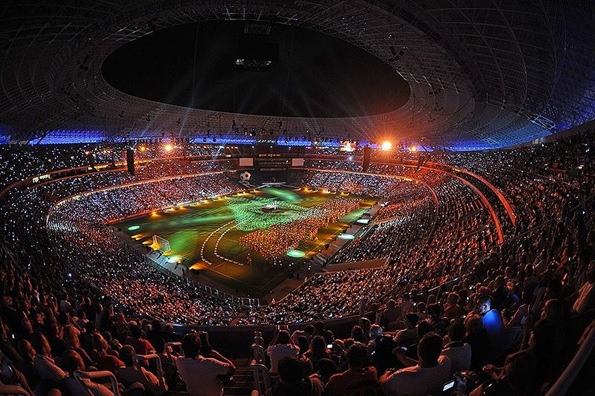
Photo by Elparadiso19
The International Stadium Yokohama, a.k.a Nissan Stadium is a sports venue in Yokohama, Kanagawa Prefecture, Japan.
The Yokohama City Office planned multi purpose about the rest place for flood by the Tsurumi River, which included the construction of the main stadium of major sport events - the 53rd National Sports Festival of Japan (Kokutai) in Kanagawa Prefecture in 1998, and the 2008 Summer Olympics in Yokohama.
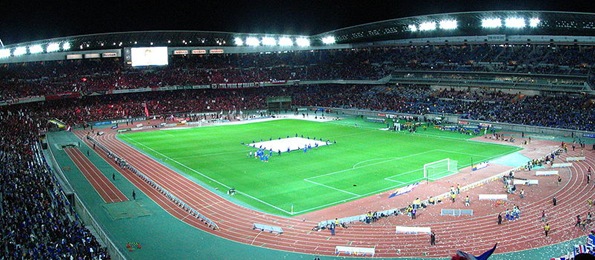
Photo by Waka77
The Stadium inaugurated in March 1998. It is the home stadium of Yokohama F. Marinos of the J. League and it hosted the National Sports Festival as its main stadium, under its first planning in the opening year.
Yokohama International Stadium has the highest seating capacity of any stadium in Japan, with a total of 72,327 seats.
It hosted three first-round games during the 2002 FIFA World Cup, and the final game between Germany and Brazil was played there on 30 June 2002 (the game was won by Brazil, 2–0).
On 28 August 2009, Nissan Motors announced that they would not renew the contract for the naming rights of the stadium, which expired on 28 February 2010. But the negotiation was continued with the city office, and they made new construction for more three years on the expired day, 1 March 2010.
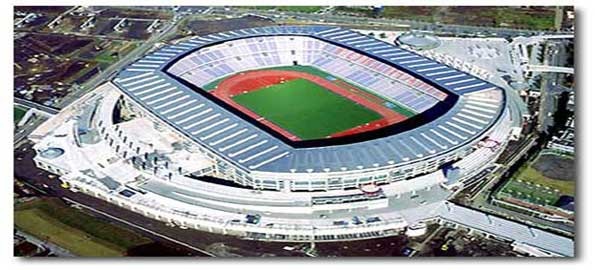
2. Wembley Stadium, London, England
Wembley Stadium (often referred to simply as Wembley, or sometimes as the New Wembley, to differentiate it from the former stadium on the same site) is a football stadium located in Wembley Park, in the London Borough of Brent, England, which opened in 2007 on the site of the previous 1923 structure. The 90,000 capacity venue is the second largest stadium in Europe, and serves as England's national stadium. It is the home venue of the England national football team, and hosts the latter stages of the top level domestic club cup competition, the FA Cup. It held UEFA five-star stadium status which was superseded by a new system of classification. It is owned by English football's governing body, the Football Association (The FA) through their subsidiary Wembley National Stadium Ltd (WNSL). The old Wembley stadium, which opened in 1923 as the Empire Stadium, often referred to as "The Twin Towers", was one of the world's most famous football stadiums until its demolition in 2003.
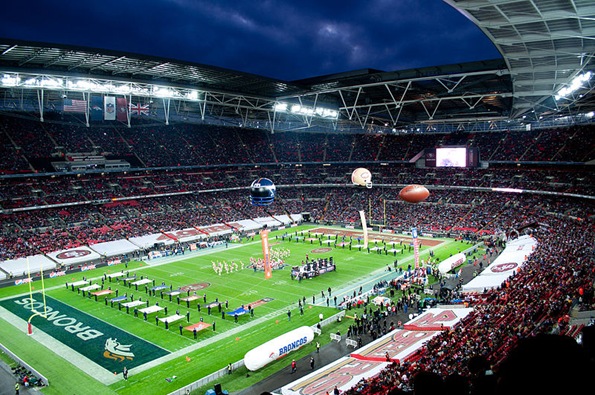
Photo by Thomas
Photo by Rob
1. Soccer City, Johannesburg, South Africa
FNB Stadium, known as Soccer City during the 2010 FIFA World Cup, is a stadium located in Nasrec, the Soweto area of Johannesburg, South Africa. It is located next to the South African Football Association headquarters (SAFA House) where both the FIFA offices and the Local Organising Committee for the 2010 FIFA World Cup were housed. Designed as the main association football stadium for the World Cup, the FNB Stadium became the largest stadium in Africa with a capacity of 94,700, However its maximum capacity during the 2010 FIFA World Cup was 84,490 due to reserved seating for the press and other VIP's. The stadium is also known by its nickname "The Calabash" due to its resemblance to the African pot or gourd.

Photo: 2010 World Cup - Shine 2010
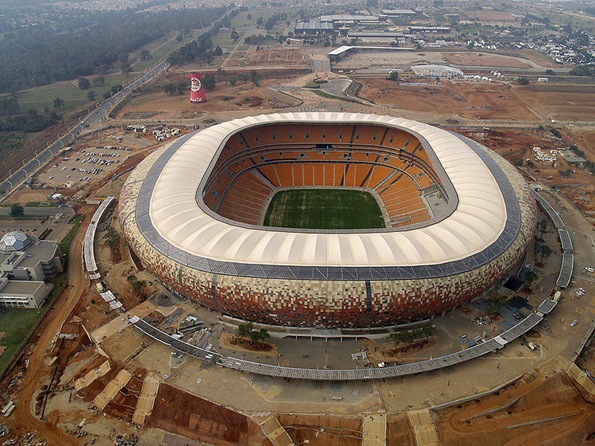
Soccer City
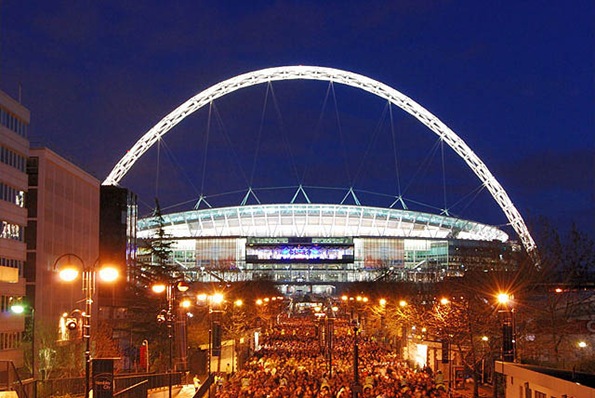


















0 comments:
Post a Comment